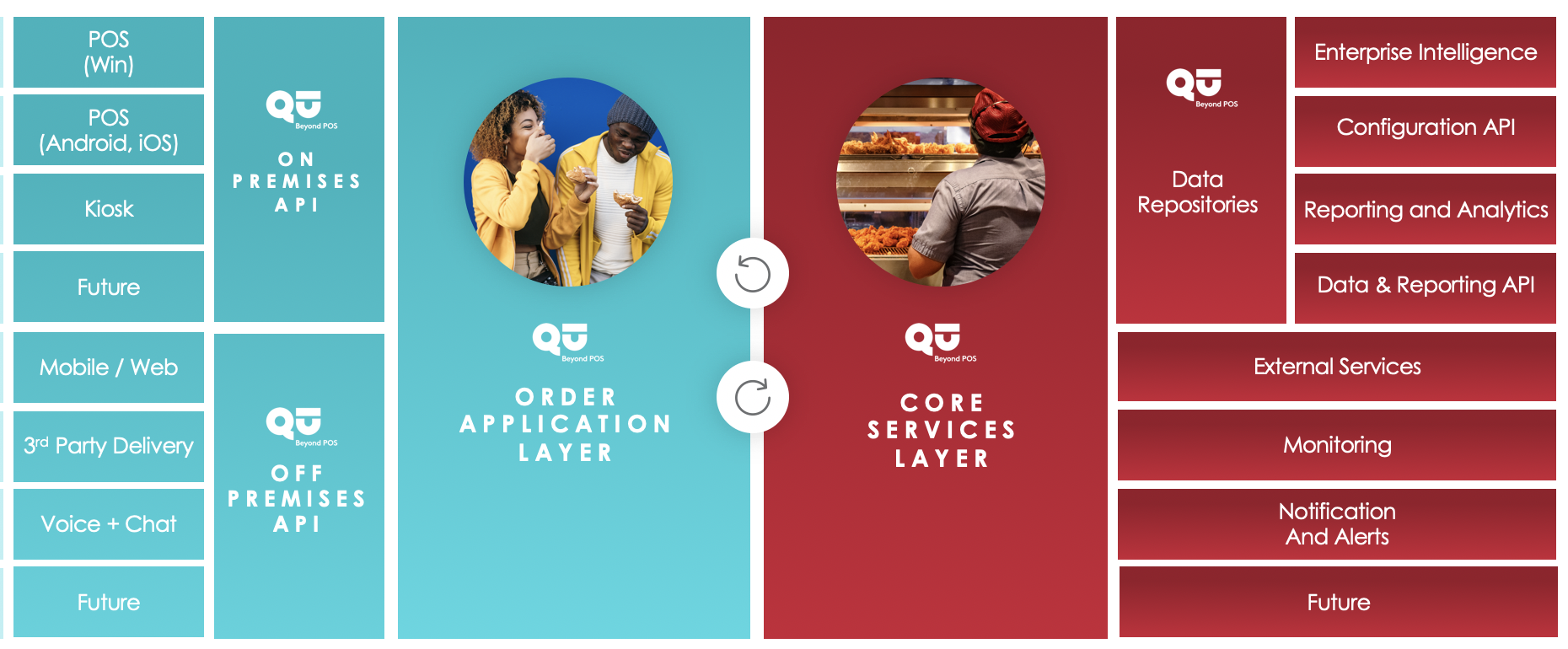Every restaurant chain operator knows that serving great food isn’t the only ingredient for business success. One of the biggest ingredients impacting enterprise success is delivering a unified omnichannel experience, without draining your resources. But this requires an integrated and well-oiled tech stack.
The problem is, few enterprise operators have been able to establish a well-oiled omnichannel machine with current-day POS stuck right in the middle of their operations. Most operators readily admit they’ve totally lost control of the ordering, brand, and guest experience because their POS has failed to provide a scalable tech foundation for the multi-channel world.
But it doesn’t have to be this way. An open, API-first platform (if architected correctly) can provide operators with a unified omnichannel experience, and help drive revenues with single source of truth data.
As an enterprise operator, it’s time to hold your POS partners accountable for delivering innovative products that help meet your needs, today and tomorrow..
The Five Must-Have Enterprise POS Features You Can’t Live Without in 2020
Here are the five POS features you need to create a truly connected restaurant brand and a scalable, easy to configure technology stack. These elements can get you to the promised land of revenue-enhancing, data-driven experiences—taking you into 2020 and well beyond.
1. One Core Processing Engine
The first foundational ingredient to success is a common core processing engine that’s separated from the ordering applications and channels.
Having a common core that communicates with a single database for order processing allows you to collect, store, and move data fluidly between channels—providing data visibility and access.
Until now, there hasn’t been a technology advanced enough to do this. But with Qu-1CORE you can ditch all the menus, middleware, tablet-farms, and redundant requirements to create a truly connected enterprise restaurant.
Pro Tip: A micro-services approach is critical. The core must be separated from the Ordering Applications and UI (including the POS client), to enable speed, security, flexibility, and scale.

2. Quality APIs
The biggest failure point of modern POS is the API, because not all APIs are created equal. If your API is not built using an API-first mentality, it’s not a quality API.
Quality APIs:
- Are designed without expectation of how it will be consumed
- Can communicate with any software or channel, even those that don’t yet exist
- Bi-directional and native
When APIs are a “one-way street” and don’t communicate with each other, you’re allowing vendors to control your business. Having bidirectional APIs that connect to your common core engine ensures in-store orders no longer need to be processed differently from digital orders.
3. Unified Menu Management
A unified menu management system will soon be a mandatory requirement for omnichannel enterprises. Once a nice-to-have, unified menu systems provide the advantage of:
- Native integrations to third-party delivery providers
- One centralized hub to manage all menus changes
- Ability to update menus, pricing, promotions, taxes, service-charges or locations for all your menus across channels
Qu’s menu management system (Qu-1MENU) and platform architecture ensure transactions are processed the same way across channels, with one data repository.

Qu POS Simplifies Menu Management by providing one menu system and data source for all your channels
4. Dynamic Menu Items
It’s a new but important term. A dynamic menu item gives you the ability to manipulate and change how menu items appear cross-channel, without duplication. And it retains the same data source for reporting and revenue opportunities.
Here’s what you need to make your menu items dynamic and flexible:
- Freedom to customize items, layer multiple dimensions and add attributes based on channel needs— without ever changing the master item.
- Ability to configure every menu item to have unlimited contexts, including day parts, order channels, branded imagery, pricing and promotions
- Configure groups using inheritance (tagging) across categories, without being limited to one structure. Qu enables you to create hierarchies by menu, store location, employees, tax groups, discounts, and service charges.
5. One Database for a Single Source of Truth
The final requirement addresses the need for a single unified view of the customer across channels: a single database with a modern codebase. With one database, enterprise operators can more easily unify data across ordering, production, and brand functions. Plus, your data can be easily accessed, analyzed, and turned into actionable insights for improving accuracy, accountability, and transparency.
Once you’ve held your POS partner to all of the above, you’ll be closer to the promised land of a single source of truth data for driving real-time revenue opportunities.
You’ll have the information you need to make smarter business decisions.




